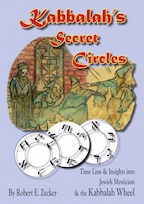Amulets and Talismen
Amulets or Talismen are common part of everyday life during Paleolithic and Neolithic periods. From these symbols evolved the small carved figurines of lime, wood, ivory, sandstone, clay and metal of the early magicians and now recognized in such ways as lucky charms, rabbits feet, horse-shoes, four-leaf clovers, and religious symbols. Latin "amuletum"- 'amulet, "talisman,' 'charm" used ofr the first time in Pliny's "Natural History." According to Marques Riviere an amulet is "an object which protects from sickness, which is a medical substance and which, thus, acts, either directly or indirectly.... There is always a significance of medicinal or magical prophylaxis in the word, since, for very long, "maleficence" or "implied maalady.It is a natural object- elephant's hair, a scrabaeus, a laurel leaf, or a "festish" Most ancient talismen were directed from the powers of the 7 known planets, each which was attributed with a special power which were conferred upon the wearer of the talisman. Instruction on the characteristics of the planets in "The Greater Key of Solomon." KameasThe Squares or Kameas, sigils and hierarchical names are derived from the works of Abbot Trithemius, Peter de Abano and Cornelius Agrippa. Many of the works are reprinted by Francis Barrett's "The Magus." The Squares or Kameas, sigils and hierarchical names are derived from the works of Abbot Trithemius, Peter de Abano and Cornelius Agrippa. Many of the works are reprinted by Francis Barrett's "The Magus." Kabalah teaches a sigil can be imposed on any kamea, or square by ascertaining the numerical value of a name according to the Hebrew alphabet. Then trace a line connecting these numbers on the kamea. The connecting lines are called a sigil (or seal that comprises the essence of the name of the person or spirit) similar to reanimation of Egyptian funerary magic, Hebrew "golem" and straw "Thay pulp" of Annamese sorceers. Return to Golem Home PageKabbalah's Secret CirclesLearn more about Kabbalah© 2001-2017 Robert Zucker. Entertainment Magazine EMOL.org All rights reserved. |
